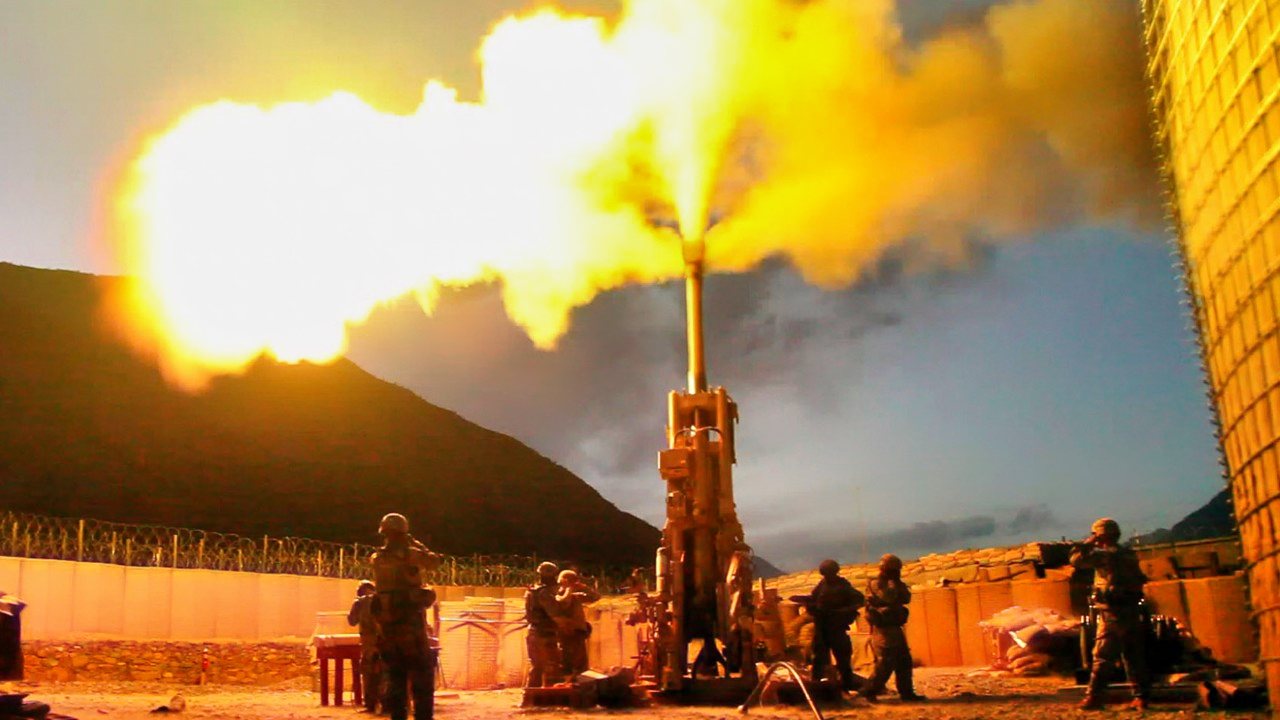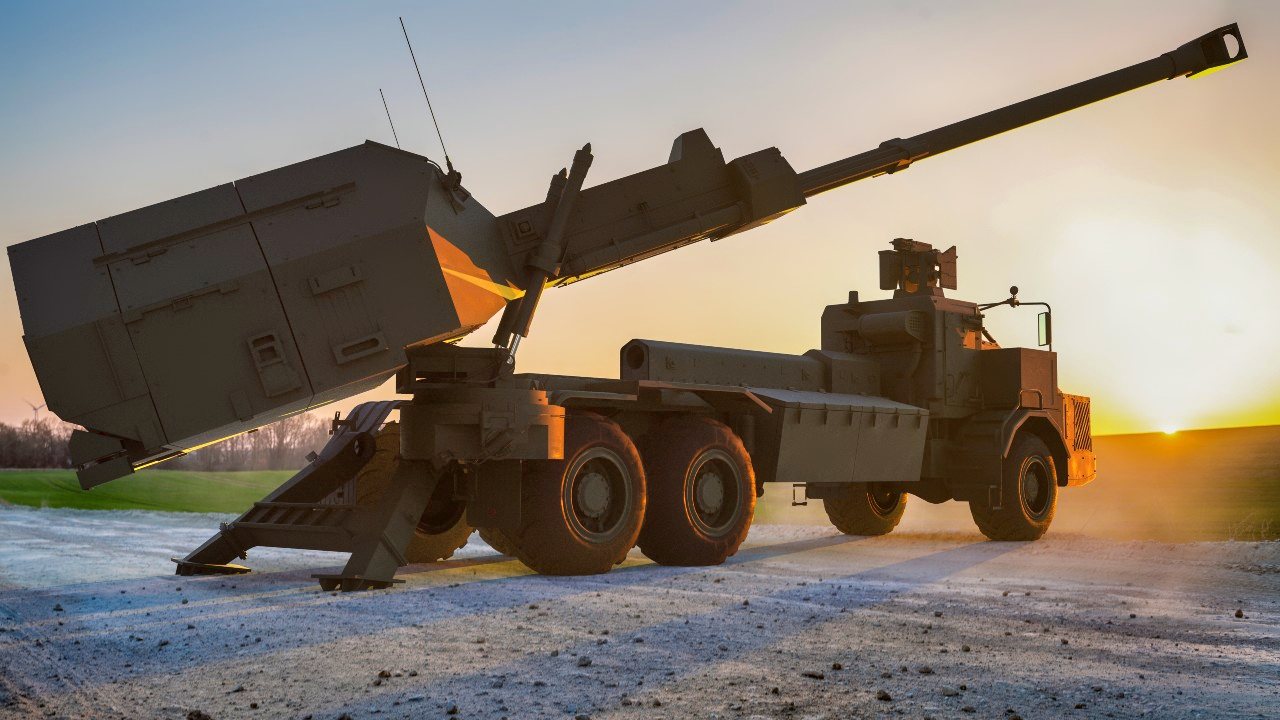More 155mm Artillery Shells Headed to Ukraine - From Europe
Multiple European nations are stepping up to help keep the flow of the much-needed 155mm rounds to Ukraine's forces. A month ago, Germany ordered more than $400 million shells from Rheinmetall and an unidentified French defense contractor.
As some U.S. lawmakers have refused to support additional aid to Ukraine, Kyiv could face a brutal winter ahead, and there have already been reports that the Ukrainian military lacks enough artillery shells to keep up the ongoing artillery duel with Russia.
However, it should be noted that multiple European nations are stepping up to help keep the flow of the much-needed 155mm rounds to Kyiv's forces. It was a month ago that Germany ordered more than $400 million worth of the shells from Rheinmetall and an unidentified French defense contractor.
The German Army had placed an order for several tens of thousands of shells for the Ukrainian armed forces under an existing framework agreement with Rheinmetall, in a deal valued at least at €100 million ($110 million), the company said in a Dec. 18 statement. That followed another announcement four days earlier, in which Berlin said it would buy 68,000 shells for Ukraine from the French armament company for €278 million.
UK and Sweden Stepping Up on Artillery Shells for Ukraine
The British Ministry of Defence, which has already donated more than 300,000 artillery rounds to Ukraine, also announced this month that it is increasing production capacity of the 155mm shells eight-fold. It is unclear how many rounds the UK will next send to Ukraine.
The Swedish Defense Material Administration (FMV) recently signed a deal with ammunition manufacturer Nammo to boost domestic production. The agreement is part of Sweden's continued support for Ukraine amid the Russo-Ukrainian war. In addition, other Nordic countries, including Norway and Denmark – both of which are also NATO members – have sent artillery rounds to assist Kyiv.
Currently, about a third of Europe's production of 155mm artillery ordnance is handled by the Czech-based CSG. It now produces about 80,000 to 100,000 shells annually but last year sought to expand that number to 150,000.
Demand Outpacing Supply
Even with the rounds coming from so many European partners, Ukraine may not receive enough 155mm shells to meet the demand. Kyiv's forces have been firing up to 7,000 rounds each day.
The United States and other NATO members have supplied Ukraine with hundreds of artillery pieces that fire the NATO-standard 155mm shells – a caliber that isn't manufactured domestically. As The Associated Press reported last spring, the round is made of four parts, including the detonating fuse, projectile, propellant, and primer. Each round is about two feet (60 cm) long and weighs about 100 pounds (45 kg), while it is 155mm (6.1 inches) in diameter. The shells can be configured in several ways, including packed with highly explosive material, but also as armor piercing and high fragmentation. Specialty shells have been employed with precision-guided systems.
"The 155 mm round and the similar Soviet-era 152 mm rounds are so popular because they provide a good balance between range and warhead size," Ryan Brobst, a research analyst at the Foundation for the Defense of Democracies, told the AP in April 2023. "If you have too small a shell, it won't do enough damage and go as far. If you have a larger shell, you can't necessarily fire it as far. This is the most common middle ground, and that's why it's so widely used."

The French military first developed the round from lessons it learned in the First World War, and it became one of the most common artillery types employed by Western militaries. It was adopted by the U.S. Army as one of its standard field heavy artillery rounds.
Systems Employed
The 155mm round is used in howitzer systems, including towed artillery and from self-propelled howitzer platforms. Ukraine was provided around a dozen Polish-made AHS Krab (Polish for "crab"), a155mm NATO-compatible self-propelled tracked gun-howitzers. The platform was designed in Poland by Huta Stalowa Wola (HSW), by combining the South Korean K9 Thunder chassis with a British BAE Systems AS90M Braveheart turret with French Nexter Systems 52-calibre long gun and Polish WB Electronics' Topaz artillery fire control system. Secondary armament of the Krab includes a roof-mounted 12.7 mm machine gun.

Ukraine has also received a small number of British-made Braveheart SPHs.
Officially known as "Gun Equipment 155mm L131," the AS90 Braveheart has been the standard self-propelled artillery platform for the UK military since the early 1990s. Designed and built by the armaments division of the Vickers Shipbuilding and Engineering (VSEL) – now part of BAE Systems – 179 were produced between 1982 and 1987. It is now in service with the 1st Regiment Royal Horse Artillery and the 19th Regiment Royal Artillery.
The AS90 is armed with a BAE Systems' 155 mm L/39 main gun. The vehicle has a crew of five, a driver plus a four-gun detachment, and a trained crew can fire three rounds in 10-second bursts, or six rounds per minute for three-minute intense bombardments. The gun can also handle two rounds per minute for 60 minutes of sustained fire.
The barrel is compatible with NATO L31 ordnance, as well as the M982 Excalibur GPS and inertial-guided munition. As previously reported, the 155mm extended-range guided artillery shell was developed as part of a collaborative effort between the U.S. Army Research Laboratory (ARL) and the United States Army Armament Research, Development and Engineering Center (ARDEC). It is capable of being used in close support situations within just 75 to 150 meters (250 to 490 feet) of friendly troops.

Wear and Tear on Artillery
Ukraine's artillery duels with Russia have been so great that the barrels of some artillery pieces have been wearing out.
As a result of the shortage of ammunition and wear to the weapons, Ukraine's forces had resorted to relying on older 105mm guns. However, those older weapons also couldn't handle such a rate of fire.
Author Experience and Expertise: Peter Suciu
Peter Suciu is a Michigan-based writer. He has contributed to more than four dozen magazines, newspapers, and websites with over 3,200 published pieces over a twenty-year career in journalism. He regularly writes about military hardware, firearms history, cybersecurity, politics, and international affairs. Peter is also a Contributing Writer for Forbes and Clearance Jobs. You can follow him on Twitter: @PeterSuciu. You can email the author: [email protected].
All images are Creative Commons.


